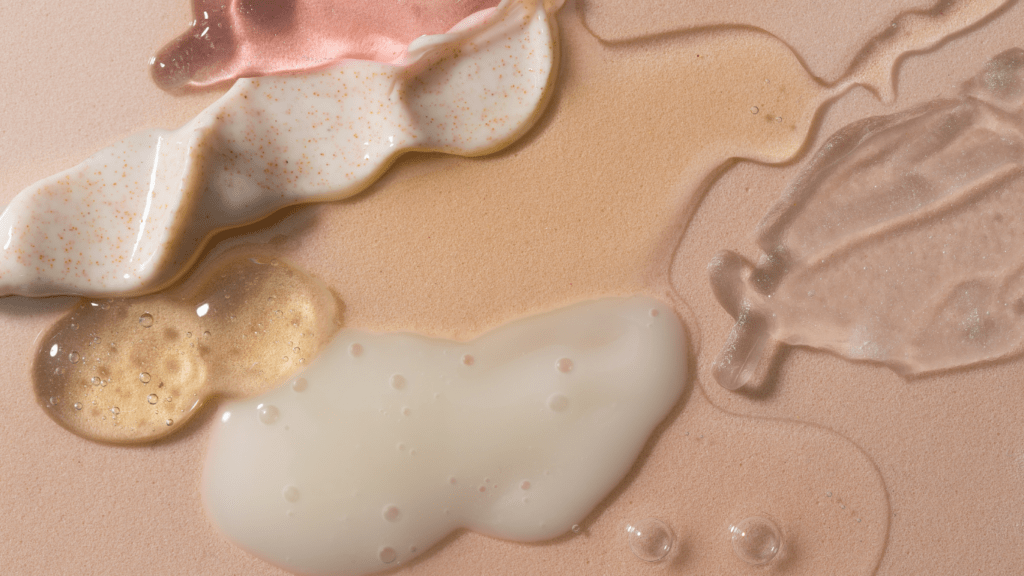Understanding Clean Beauty
Clean beauty involves products made with natural, non-toxic ingredients. It aims to prioritize consumers’ health and environmental sustainability by eliminating harmful chemicals and synthetic additives. Clean beauty items often feature botanicals, minerals, and non-GMO components.
What Sets Clean Beauty Apart?
- Natural Ingredients: Green tea extract, aloe vera, and argan oil are among the commonly used natural ingredients in clean beauty products. These elements reduce potential harm and promote skin health.
- Transparency: Brands disclose all ingredients on labels, ensuring consumers know exactly what they’re applying to their skin. This practice builds trust and aligns with increasing consumer demand for transparency in the beauty industry.
- Sustainability: Clean beauty brands often use eco-friendly packaging, such as biodegradable containers and recyclable materials. This approach reduces environmental impact and supports a sustainable future.
The Impact on Consumer Choices
Consumers are increasingly opting for clean beauty products due to rising awareness about health and sustainability. Knowledge about potential risks associated with synthetic chemicals drives this shift. For instance, ingredients like parabens, phthalates, and sulfates are avoided due to their harmful impact.
Regulatory Aspects
The beauty industry isn’t strictly regulated. Thus, clean beauty brands often adopt self-imposed standards and certifications like USDA Organic, Leaping Bunny, and EWG Verified to assure consumers of product safety and ethical practices. These certifications signify compliance with high standards of natural and safe ingredients.
Popular Clean Beauty Brands
- BeautyCounter: Known for rigorous ingredient screening and eco-friendly practices.
- Tata Harper: Offers 100% natural and non-toxic skincare products.
- ILIA Beauty: Combines performance with sustainability, using organic ingredients and recyclable packaging.
Future Trends in Clean Beauty
Technological advancements and increasing consumer education drive ongoing innovation in clean beauty. The industry continues to evolve with a growing range of effective and safe products. Increasing focus on inclusivity ensures a diverse range of skin tones and types are catered to.
In essence, clean beauty represents a paradigm shift towards healthier choices in skincare and makeup. It underpins a broader movement towards mindful consumption and environmental stewardship.
The Shift Towards Natural Ingredients

Consumers are increasingly favoring natural ingredients in their beauty products. This shift stems from a mix of evolving preferences, health awareness, and environmental responsibility.
Consumer Preferences
Natural ingredients attract consumers seeking healthier lifestyles. Shoppers look for labels with botanicals and minerals over synthetic chemicals. Demand is rising for transparency in product formulation and sourcing. Brands meeting these criteria often see loyal customer bases.
Health and Safety Concerns
Safety is a major factor. Many avoid synthetic additives linked to allergies, irritations, or long-term health risks. Natural products are perceived as safer, with fewer adverse side effects. Research supports the benefits of ingredients like aloe vera and chamomile for skin health. Brands capitalizing on these benefits often highlight their toxin-free and hypoallergenic properties.
Environmental Impact
Sustainable practices drive the clean beauty movement. Natural ingredient sourcing usually involves eco-friendly farming and ethical labor practices. These methods reduce environmental degradation and promote biodiversity. Brands committed to sustainability often use recyclable packaging, minimizing waste. Consumers prefer these eco-conscious choices, aligning their purchases with broader environmental goals.
Key Natural Ingredients in Clean Beauty
Clean beauty relies heavily on the power of natural ingredients to ensure products are safe and effective. The use of plant-based extracts, essential oils, and natural preservatives showcases the commitment to health and sustainability.
Plant-Based Extracts
Plant-based extracts form the backbone of many clean beauty products. Ingredients like aloe vera, green tea, chamomile, and calendula provide specific benefits. Aloe vera soothes and hydrates the skin. Green tea offers antioxidant properties to combat free radicals. Chamomile reduces inflammation and irritation. Calendula promotes healing and has antimicrobial properties.
Essential Oils
Essential oils add both therapeutic and aromatic qualities to clean beauty products. Lavender oil soothes and calms the skin and senses. Tea tree oil provides strong antiseptic benefits, ideal for acne-prone skin. Rosehip oil, rich in vitamins A and C, promotes skin regeneration and reduces signs of aging. Eucalyptus oil, known for its antiseptic properties, helps cleanse and purify the skin.
Natural Preservatives
Natural preservatives ensure product longevity without harmful chemicals. Ingredients like rosemary extract, grapefruit seed extract, and vitamin E play a crucial role. Rosemary extract has antibacterial and antioxidant properties. Grapefruit seed extract contains potent antimicrobial agents. Vitamin E, an antioxidant, helps maintain product stability and prevents rancidity.
Benefits of Using Clean Beauty Products
Using clean beauty products offers several key benefits. These products not only enhance skin health but also adhere to ethical considerations and promote sustainability.
Skin Health
Clean beauty products prioritize natural ingredients that nurture the skin. Ingredients like aloe vera and chamomile soothe and hydrate, reducing irritation. Essential oils such as tea tree oil offer antibacterial properties, helping prevent acne. Natural botanicals, rich in vitamins and antioxidants, support skin regeneration, leading to a healthier complexion over time.
Ethical Considerations
Consumers increasingly value brands that align with ethical practices. Clean beauty products often avoid animal testing, ensuring cruelty-free development. Labels like “vegan” signify formulations free of animal-derived ingredients. Support for fair trade ensures ethical sourcing of ingredients, benefiting communities involved in production.
Sustainability
Clean beauty products typically favor eco-friendly packaging and sustainable sourcing. Recyclable or biodegradable materials reduce environmental impact, aligning with consumer preferences for greener choices. Brands committed to sustainability often employ practices like responsible farming for plant-based ingredients, ensuring minimal ecological footprint.
Challenges in the Clean Beauty Industry
While clean beauty is gaining popularity, the industry faces several challenges that need addressing.
Ingredient Sourcing
Finding high-quality, natural ingredients remains a significant challenge. Many clean beauty brands strive for sustainable and organic ingredients, limiting their sources. For example, certified organic farms might produce only a limited supply of key botanicals like chamomile and calendula. Seasonal variations and environmental factors can further impact the availability and quality. Brands often compete for these limited resources, driving up costs and complicating supply chains.
Regulatory Issues
The clean beauty industry also navigates complex regulatory landscapes. Unlike traditional beauty products, clean beauty products aim to avoid harmful chemicals, but regulations vary globally. Inconsistent standards make it difficult for brands to comply across different markets. For instance, an ingredient safe in one country might face restrictions in another. Clean beauty brands must stay informed and adapt swiftly to evolving regulations to maintain market compliance and consumer trust.
Product Performance
Another significant challenge is ensuring that clean beauty products perform as well as conventional ones. Consumers expect clean beauty products to deliver effective results without synthetic chemicals. Brands experiment with natural ingredients to match the efficacy of traditional products. For example, developing long-lasting natural preservatives like grapefruit seed extract that maintain product integrity is complex. Balancing product performance with the clean beauty ethos requires ongoing innovation and rigorous testing.


 Luxury Travel & Lifestyle Contributor
Rose Boucher brings her love for glamorous travel destinations and luxury living to Glam World Walk. As a lifestyle writer, Rose captures the essence of exotic locations and exclusive experiences, offering readers a taste of the world’s most luxurious getaways. Her expertise in finding hidden gems, coupled with a deep understanding of fashion and culture, adds a unique flair to the site’s content, making her a trusted voice for those seeking elegance in every adventure.
Luxury Travel & Lifestyle Contributor
Rose Boucher brings her love for glamorous travel destinations and luxury living to Glam World Walk. As a lifestyle writer, Rose captures the essence of exotic locations and exclusive experiences, offering readers a taste of the world’s most luxurious getaways. Her expertise in finding hidden gems, coupled with a deep understanding of fashion and culture, adds a unique flair to the site’s content, making her a trusted voice for those seeking elegance in every adventure.
